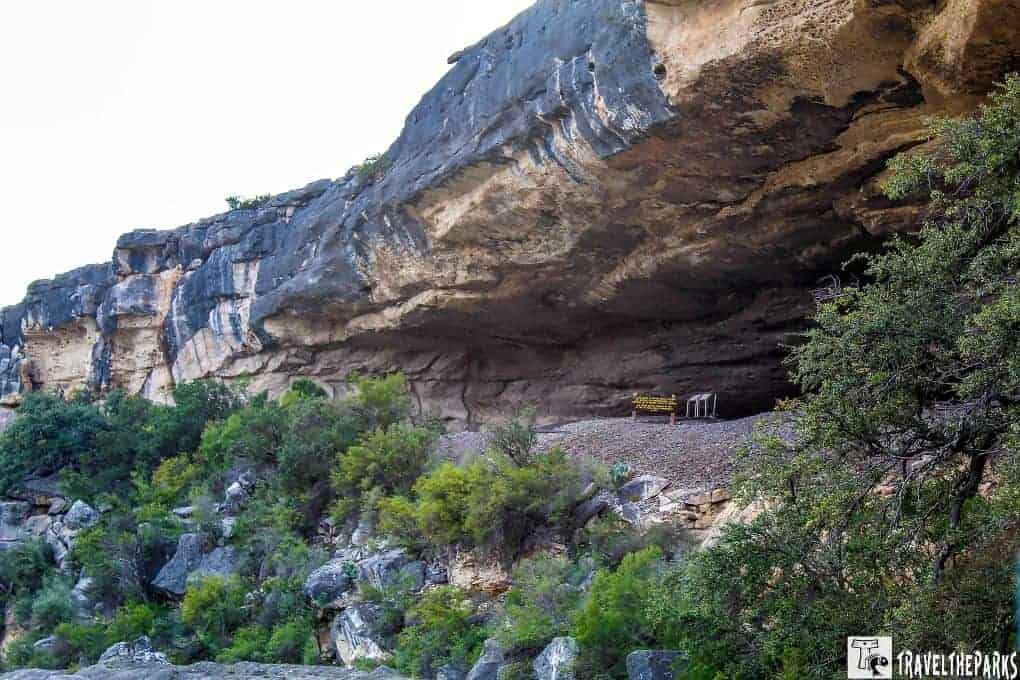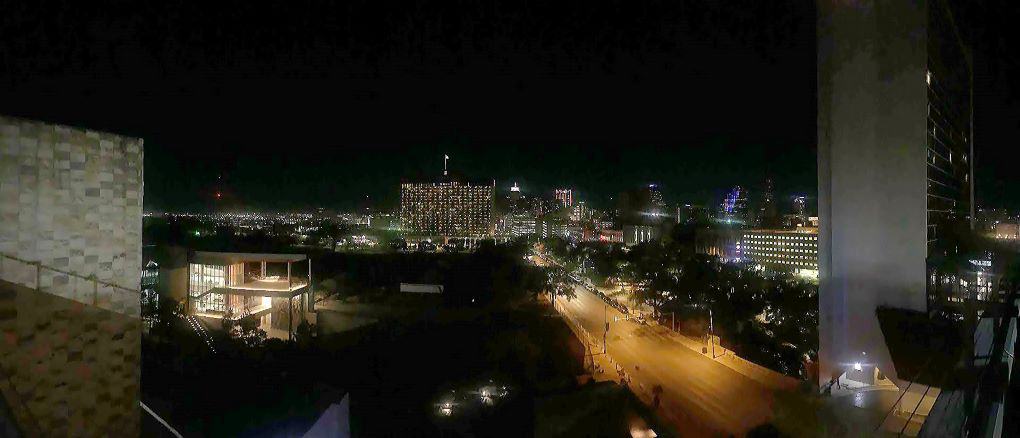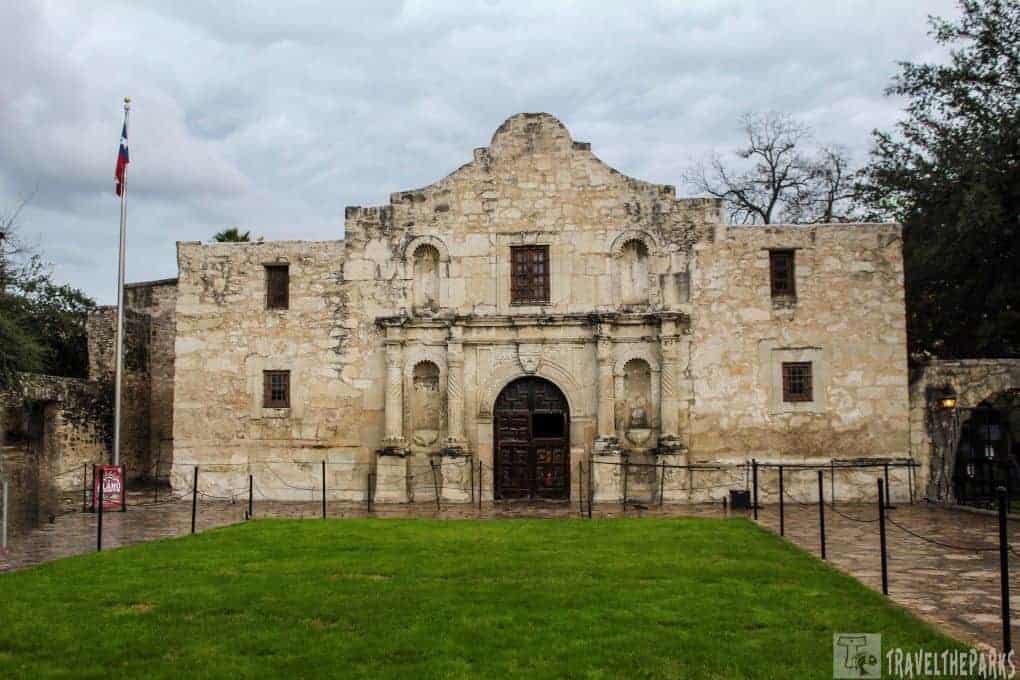Step into the past at Seminole Canyon State Park, a hidden gem tucked away in the craggy canyon landscape of southwest Texas. On our drive from San Antonio to Big Bend National Park, we stopped for one night at this state park. The ancient rock art and outdoor adventures had me adoring this beautiful park. I was completely taken aback. We sincerely hope this guide has all the information you need to prepare for your trip.

You can spend hours wandering the 2,172 acres, wondering about the people who used to live here. They painted a lot of rock art in their shelters, like the ones in Fate Bell Shelter. We followed cactus-lined trails leading us to the Rio Grande River. The Rio Grande and Pecos rivers have been eroding the park’s steep-walled canyons for millions of years. At every turn, there were wonderful desert views for us. The rock paintings were tales chiseled in stone, waiting to be narrated. Whether you come for the archaeology or the scenery, adventure awaits at Seminole Canyon State and Historical Park!

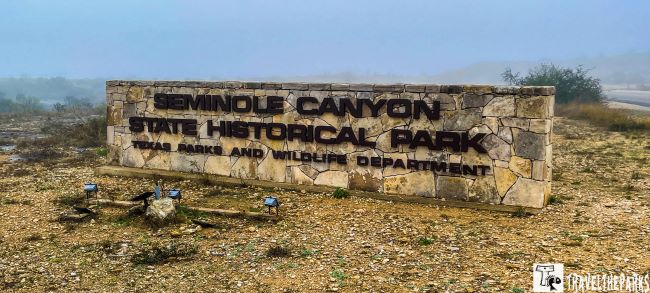
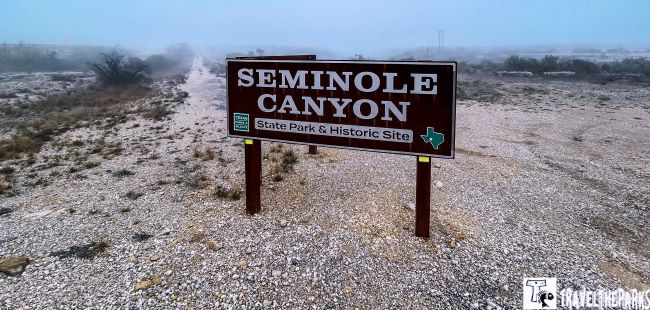
This post may contain affiliate links, meaning if you purchase something through one of these links, we may earn a small commission at no extra cost to you! Read the full disclosure policy here.

Table of Contents
Seminole Canyon State Park Travel Guide: What to Know Before You Go
- Operating hours: Open daily from 8 AM to 5 PM (gates close at 10 PM for campers).
- Entry fee: $5 per adult (13+); kids 12 and under free. Texas State Parks Pass: Consider purchasing if visiting multiple parks ($70/year).
- Guided Tours & Permits: Rock art tours: Ancient Native American pictographs can only be seen on a guided tour. Tours are typically offered Thursday–Sunday, weather permitting. Access to Panther Cave (ancient Indigenous pictographs) requires a guided boat tour (book in advance).Self- guided hikes: Main trails like the Rio Grande Trail are open without permits. Group permits: Required for groups of 10+ people.
- Pet Policy: Leashed pets only: Pets must be on a leash no longer than 6 feet at all times. Restricted areas: Pets are not allowed in park buildings, on guided tours, or near archaeological sites (to protect fragile rock art).
- No cell service: Most areas of the park, including trails, have zero signal (AT&T, Verizon, etc.).
- What to Bring: Bring plenty of water—there’s no potable water on the trails. Wear sturdy hiking shoes for rocky, uneven terrain. Pack sun protection like a hat, sunglasses, and sunscreen. Bring trail snacks or lunch, especially for longer hikes. Carry a printed map or downloaded trail guide due to poor cell signal.
Pro Tip: Arrive by 7:30 AM to snag a parking spot and enjoy trails in cooler, golden-hour light. Check the park’s official website for last-minute alerts!
Brief History of Undiscovered Seminole Canyon State Park
Seminole Canyon is one of the many attractions in this park; don’t miss it. Established in 1973 and opened in 1980, this park is relatively new to the Texas park system. However, it is interesting to note that humans have occupied this region for over 10,000 years. Archaeological evidence shows human settlements dating back to the Holocene era. The park is also a part of the huge Seminole Canyon Archaeological District, which has significant historical value. On October 15, 1966, Seminole Canyon State Park was added to the National Register of Historic Places.
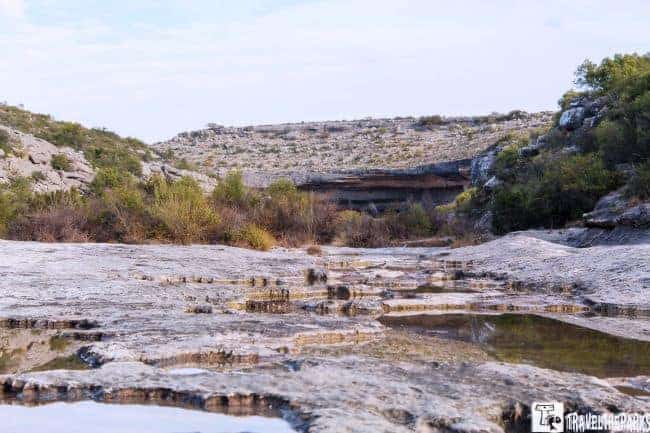
We learned that Seminole Canyon is home to some of the oldest rock art in North America. There are pictographs carved into the canyon walls that date back thousands of years. In North America, some of the earliest pictographs date back to 4,000 BC. Indigenous people used these pictographs for religious purposes and to illustrate ritual practices and everyday life. A number of Native American groups lived in and around the canyon, including the Coahuiltecan and Apache.
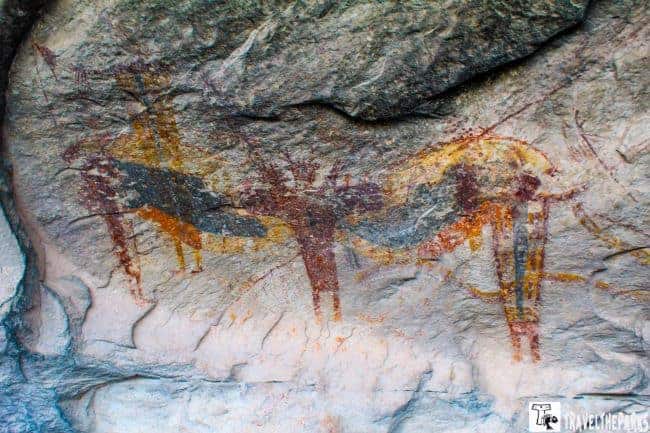
Seminole Canyon was named after the United States Army’s Seminole and Negro Indian Scouts. Stationed at Fort Clark, Seminole and Negro Indian Scouts frequently acted as go-betweens for the U.S. Army and different Native American tribes. Using their knowledge of culture and language, they aided in communication and intelligence gathering. Despite their apparent importance, the helpful efforts of these scouts have occasionally been overlooked in historical records. From 1872 to 1914, these scouts patrolled the West Texas frontier, defending it from attacks by bands of Apache and Comanche.
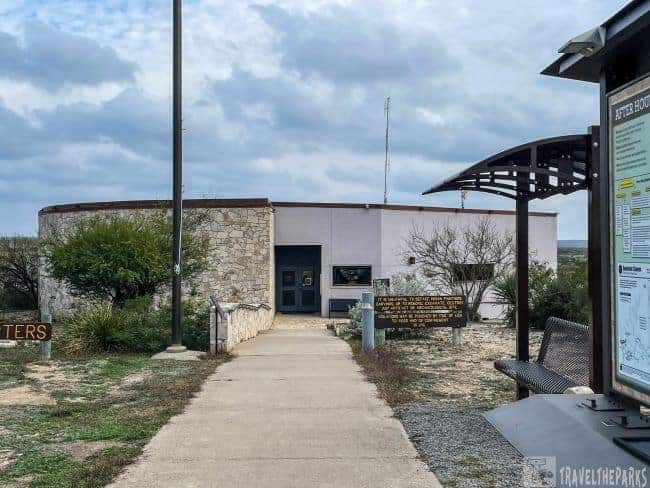
Explore the Hidden Wonders of Seminole Canyon State Park
The visitor center is also the park headquarters. We arrived for check in just in time to book the afternoon 3pm Fate Bell shelter Tour. With an hour to spare, we setup camp, returning to the visitor center in time for the tour.

When we stepped through the doors, we were immediately transported on a spellbinding voyage through endless ages of history. The visitor’s center has displays and dioramas representing early Indian lifestyles that date back 10,000 years or more. The ancient rock art that adorned the walls seemed to come alive, softly murmuring stories of civilizations that had faded into the mists of time.
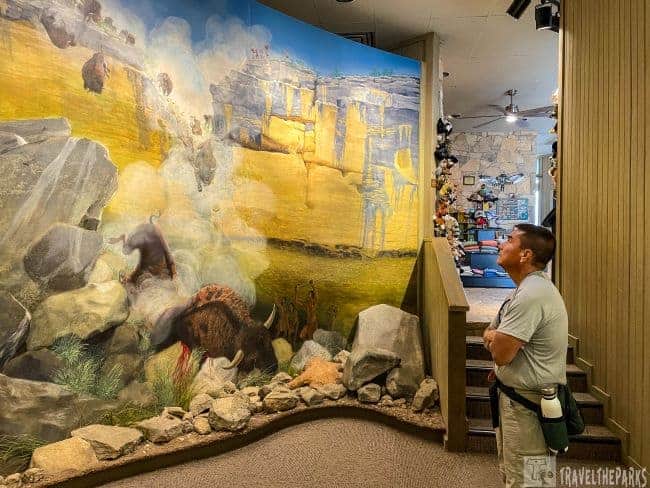
Discovering the Seminole Canyon State Park Visitor Interpretation Center
Much of the history dates back 10,000 years or more. Also well explained is the history of early indigenous people, Spanish, and later American settlers, including ranchers. Very intriguing information about the black Seminole group, stationed here in the early years. If you do not have time to take the tour into the canyon, there are replicas of the pictographs on display.

We did not know that in the late 19th and early 20th centuries, the Southern Pacific expanded its rail network into Texas. In 1882, the Southern Pacific completed the construction of the railway line through Seminole Canyon. However, in 1892, when they constructed the Pecos River bridge, they chose to bypass the park, resulting in its abandonment. The old railroad bed that traversed the park is still visible. Even an old bake oven, which railroad workers once used for cooking during railroad construction, sits abandoned. It was so out of place in the middle of the desert.
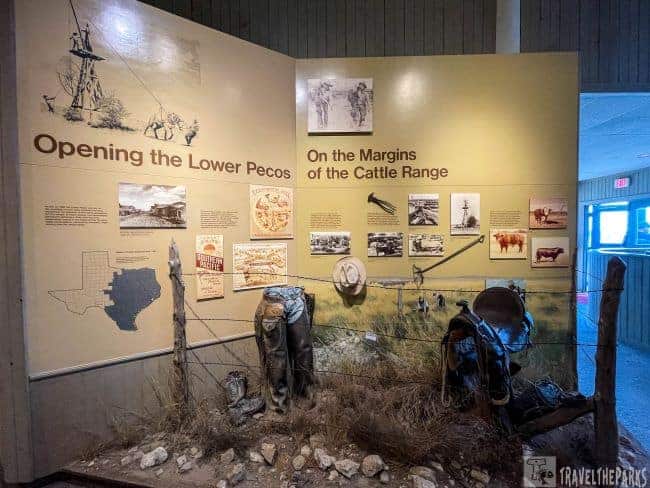
Ranching has played a significant role in shaping the cultural heritage of this region. Despite the rugged terrain, the Lower Pecos river provided favorable conditions for cattle ranching. It seems that the ranchers here took advantage of the vast stretches of open range for grazing cattle. The rivers served as a crucial water source for their herds.
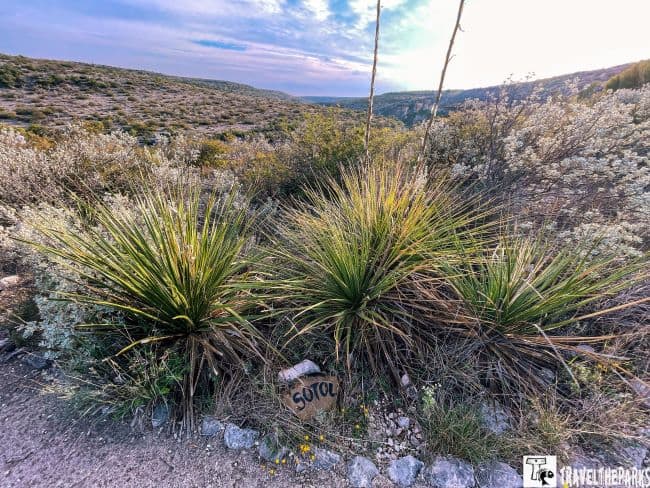
Frequently Asked Questions for Visiting Seminole Canyon State Park and Historic Site
What is the best time of year to visit?
The park is open year-round, but the best time to visit is in the spring or fall, when the temperatures are mild. Summer temperatures in Texas can reach 90°F or higher, with some days exceeding 100°F. It is best to visit during the fall (September to November) or spring (March to May) when temperatures are more moderate.. We prefer the milder weather for outdoor activities. Our Texas/New Mexico road trip during Christmas vacation was a perfect opportunity to enjoy hiking and exploring.

What time is the Visitor Center/Museum open? What are the park hours and fees?
Seminole Canyon State Park is typically open daily from 8:00 AM to 5:00 PM. Headquarters & Visitor Center is open 8:15 AM to 4:15 PM. The park does not have a gate, so there is no entrance fee. However, there is a day-use fee of $4 per person, 13 and older.
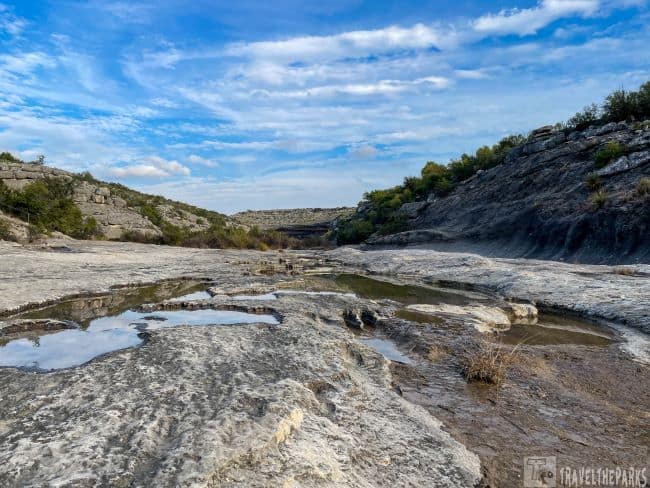
Hiking Through Stunning Scenery
Whether you’re an outdoor enthusiast or a nature lover, Seminole Canyon State Park is a gem. You cannot help but feel awe as you wander through the park’s trails and canyons, admiring the resilience of those who once lived here. A diverse trail system makes Seminole Canyon State Park a great place for everyone. There are a range of hiking trails in the park that are suitable for hikers of all abilities, from easy strolls to challenging trails that lead to breathtaking views. Remember to bring plenty of water and use sunscreen in the desert.

Windmill Nature Trail
This is a short, moderate, 0.5 mile paved trail directly adjacent to the visitor’s center. What we noticed first was the giant, Maker of Peace of an Indian Shaman artwork by Bill Worrell. This is the highlight on this trail. Interpretive markers allow for easy identification of the parks plant species.
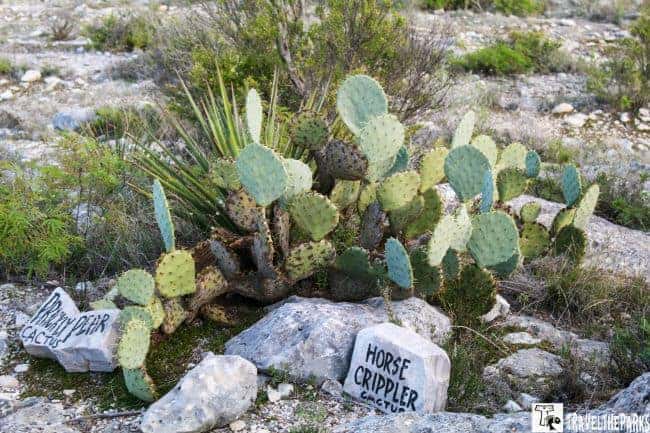
Take the Long Way Home-Canyon Rim Trail
Early morning we embarked on a thrilling adventure along the 4.9-mile out-and-back trail to Panther Cave Overlook. This is a moderately challenging hike that rewards you with breathtaking views. Unfortunately, the morning fog posed a challenge for capturing stunning photos of this trail. Nevertheless, we conquered it returning via the Rio Grande Trail. Despite the cool air, the conditions were perfect for hiking. Our furry companion, Sage, happily accompanied us on this dog-friendly trail. Although he ended up a little damp and sandy, he absolutely adored the entire walk.
Today, the sight of a handful of hares captivated Sage. Sadly, no deer crossed our path, although we spot plenty of tracks in the mud. After a bit of a journey, we finally reached the overlook. However, the only way to admire Panther Cave is from afar, either from the hiking trail or from a boat launching from the Amistad NRA public dock.

The scenic Rio Grande Trail meanders along a level two-lane dirt road. Covering a distance of 2.3 miles, this mostly flat ranch road offers stunning views of the Rio Grande River. Visitors can arrange a daily van excursion to the Rio Grande Overlook through the park’s visitor center. For a small fee, hop on the air-conditioned van and be led to the impressive panther painting at Panther Cave.
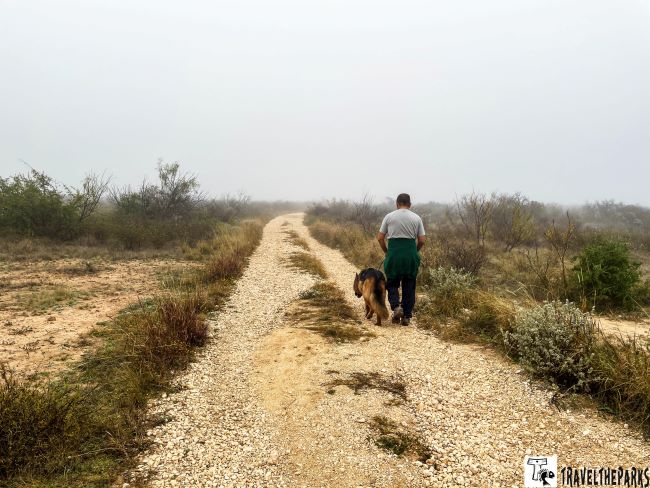
Up for a Challenge? Try these Hikes
Ready for an all-day hike, you could try the Presa Canyon Tour. Given once a month by volunteers with the Rock Art Foundation, there is no trail to follow. It’s a rough march through a remote section of the park. The tour covers 6.5-miles in 8 strenuous hours and you must be over 13 years of age to participate (limit 15 people). Reservations are required for the guided tours held from October through March, which cost $30 per person. Participants should bring their own water, lunch, and snacks. Hiking boots and a walking stick are helpful too.
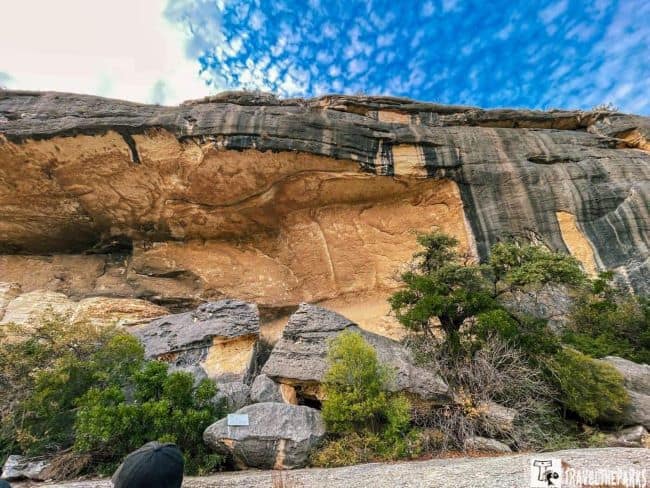
The Upper Seminole Canyon Hike is a shorter hike, but not any less strenuous. Cost for this hike is $13 and you must be 13 or older to attend. The hike lasts about 3-4 hours and covers the upper canyon. Tickets are available online or at the park’s office.
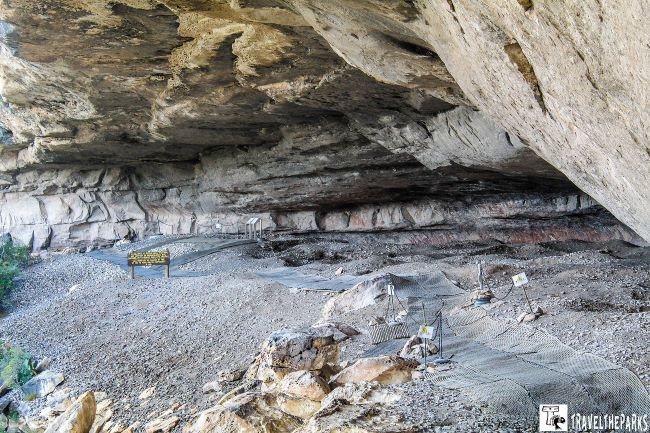
The Bell Fate Shelter Tour: A must do Tour Activity
The Fate Bell Shelter is a significant archaeological site within Seminole Canyon State Park. They named it after the former owner of the land, Fayette Bell. The Fate Bell Shelter Pictograph is a ranger guided tour. It departs twice daily, 10 a.m. and 3 p.m (Wednesday thru Sunday). This tour takes about 90 minutes traversing 1.5 miles. Current cost is $8 per person.. Booking this tour in advance is necessary to visit the canyon floor since the shelter only allows 10 visitors at a time.

Our group met just outside the visitor center/museum promptly at 3pm. Our guide, Tanya Petruney, outlined the rules prior to all of us descending the 250 feet to the limestone overhang shelter. The first section of the trail follows the switchbacks of the Windmill nature trail down to a picnic shelter with a fantastic view overlooking of the canyon. From the overlook, we descended a steep set of stairs down into the slot canyon. To say the views are pretty sensational is an understatement. Here, in Seminole Canyon, the echoes of the past resonate with every gust of wind and every step you take.
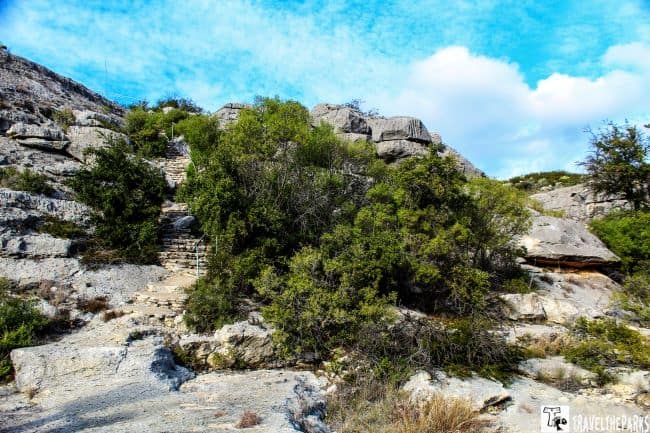
Descending into the Canyon
I was glad it was not the rainy season. I could imagine the rush of water that must have eroded this canyon during the flash flooding. The volume must be immense. Today, only a few pools of water remain, reflecting the light from the canyon walls. Tanya told us the canyon has its own unique microclimate. Trees and shrubs seem to be taking a grip on the canyon. We walk along the riverbed-the smooth stone makes the walk fairly easy. Reaching the limestone alcove, we climb a wooden walkway to view the first set of pictographs.
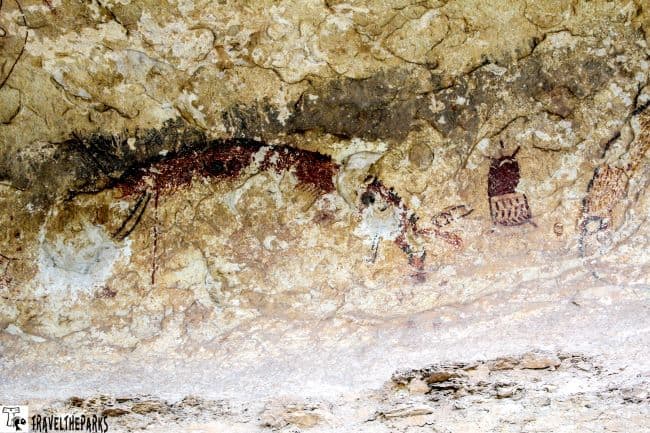
Viewing the Alcove Pictographs
The tour consists of two main parts: the Fate Bell Annex and the Fate Bell mural alcove. A raised wooden boardwalk leads to the Fate Bell Annex, which is a smaller alcove. The main pictograph at the Fate Bell Annex is actually graffiti, but its age makes it historically significant. Adjacent to the annex are the main pictographs, protected by rubber matting after a series of steps. During the tour, we first observed an excavated area in the midden, which had been excavated for archaeological purposes. Our guide explained how previous excavations in the midden area revealed valuable artifacts and insights into the lives of ancient inhabitants.
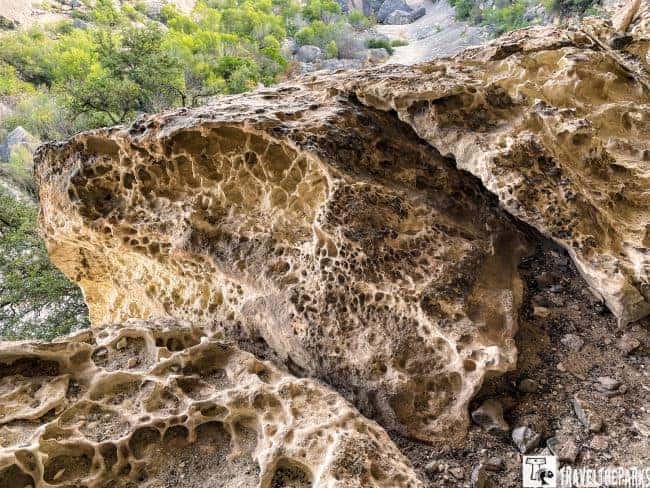
The next pictographs, our guide Tanya, shared a wealth of information with us about the various rock art forms found in the shelter. These Lower Pecos style pictographs portray a variety of subjects, such as humans, animals, symbols, and abstract designs. To me, some paintings resembled a centipede and a bacterium (silly me), while another appeared to depict warriors with antlers on their heads. Tanya mentioned that the meanings of the art are not immediately apparent, which made me rethink my initial interpretations. Later, someone pointed out that the detailed red, black, and yellow paintings actually depicted a panther hunting a deer. From the elevated vantage point of the shelter, I couldn’t help but notice the weathered mesquite trees and the marked rocks, which are clear signs of the erosional forces that have shaped the site.
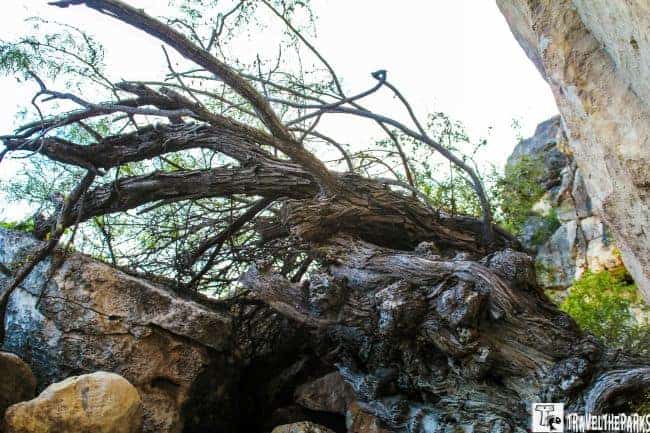
Campgrounds and Backcountry Camping at Seminole Canyon State Park
The park has both RV and tent campground options available. For those who prefer the comforts of modern amenities, the park offers well-maintained campgrounds complete with RV hookups, restrooms, and picnic areas. The park is managed and protected by the Texas Parks and Wildlife Department, campers can make advanced reservations through their site.

As the sun began to dip below the horizon, it was time to find the perfect spot to take pictures, as we had unobstructed views. After we completed our Fate Bell Shelter tour, we sat around the campfire and prepare a delicious meal under the stars. It was Christmas Eve. We were in awe as the sky came alive with stars, far removed from the glare of city lights. Settling in for the night to recharge for our early morning drive to Big bend National Park.
PRO Tip: You are more than welcome to bring your pets to the hiking trails and the campground, as long as you keep them on a leash. However, please note that they won’t be able to accompany you on the guided tours of the canyons.
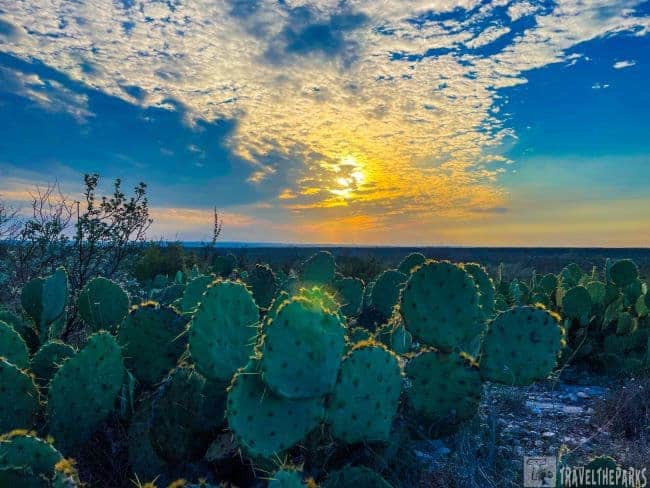
Final Thought: Beautiful Seminole Canyon State Park: A Hidden Gem In Texas
Visit Seminole Canyon State Park to witness the merging of history of past and present, creating a lasting impact. Explore ancient rock art, picturesque trails, and camping under the Texas night sky. This state gem promises unforgettable moments. Start planning your trip to Seminole Canyon State Park today!
Have you been to Seminole Canyon State Park? What did you think of it? Did you go to Fate Bell Shelter? How was it! We would appreciate it if you could leave your feedback in the comments section.

